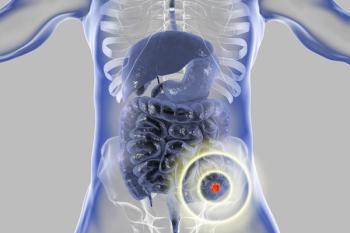
Metastatic Colorectal Cancer: Patient Presentation, Diagnosis, and Treatment
Comprehensive insights on the stratification, diagnosis, and treatment of patients with metastatic colorectal cancer.
Episodes in this series

This is a synopsis of an Insights series featuring Marwan G. Fakih, MD, of City of Hope, and Atif Hussein, MD, MMM, FACP, of Memorial Healthcare System.
Dr Fakih asked Dr Hussein whether he has observed changes in patients with colorectal cancer (CRC) seen in his oncology practice. Dr. Hussein confirmed seeing younger patients with CRC, likely related to delayed screening during the COVID-19 pandemic, resulting in more patients presenting with advanced disease. He emphasized that colonoscopy allows early detection and removal of precancerous polyps, distinguishing it from purely diagnostic screening tests. Still, at diagnosis 50% of patients have metastatic disease, some even with unusual bone metastases. Until colonoscopy uptake reaches 80% to 90% like mammography, metastatic CRC will remain highly prevalent. Patients often first report abdominal discomfort, rectal bleeding, or iron deficiency anemia to primary care, ultimately leading to a CRC diagnosis.
For metastatic CRC, Dr Hussein obtains next generation sequencing, assessing RAS mutation status to guide first-line anti-epidermal growth factor receptor therapy eligibility. Other tested markers include microsatellite instability, BRAF mutations, and HER2 amplifications, most relevant after first-line treatment. Left-sided tumors, more addicted to epidermal growth factor receptor, respond better to cetuximab or panitumumab with chemotherapy. Right-sided tumors are treated with bevacizumab and chemotherapy. After exhausting the 2 standard lines of therapy, few third-line options exist, underscoring the need Dr Hussein cited for research like the phase 2 SUNLIGHT trial evaluating trifluridine/tipiracil and bevacizumab in this refractory setting.
Dr Fakih agreed, noting rationale for sidedness-guided treatment based on biological differences between right and left colon embryonic origins. Both emphasized PARP analysis at diagnosis along with sidedness and RAS mutation status to personalize metastatic CRC treatment while awaiting improved screening penetration to reduce advanced disease prevalence.
*Video synopsis is AI-generated and reviewed by Cancer Network editorial staff.
Newsletter
Stay up to date on recent advances in the multidisciplinary approach to cancer.


















































































